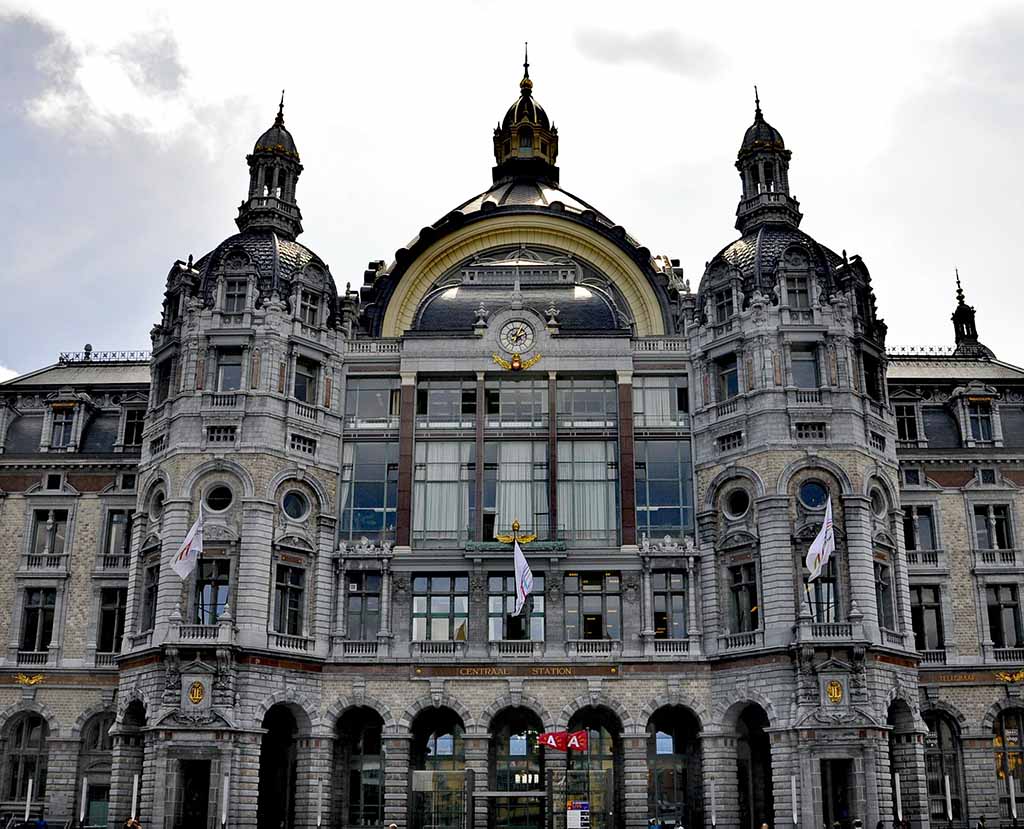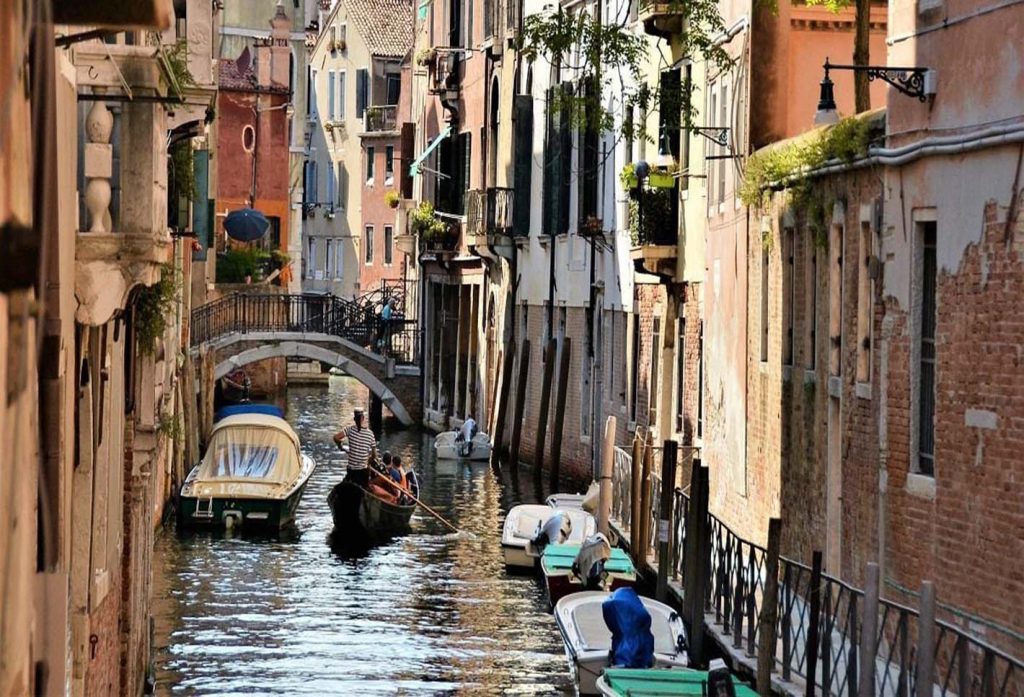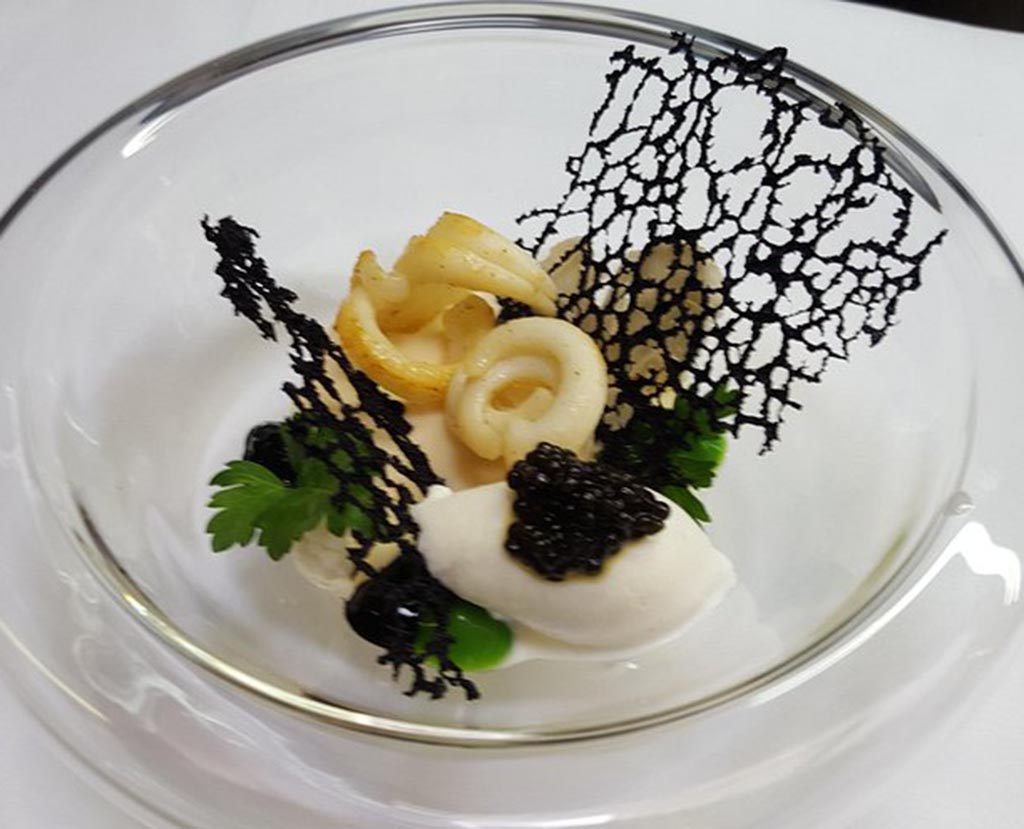In the north of Belgium, there is a city that exudes elegance and modernity. It is not only the capital of diamonds, but also a source of inspiration for artists. Antwerpen, a gem in the Low Countries, attracts travelers from all over the world with its rich historical heritage, multicultural integration, and a wide range of artistic buildings. Walking into Antwerp is not just walking into a piece of history, but also a full sensory experience of art and life.
1. Central Station: The entrance to time under the magnificent dome
Location: Koningin Astridplein, Antwerp City Center
Opening hours: Open all day
Suggested time to visit: 30 minutes to 1 hour
Transportation route: You can take international trains (such as Thalys, Intercity), domestic trains or trams to Antwerpen-Centraal
Booking platform: Omio, Trainline
Fee: Visiting the station is free; train fares depend on the starting city
Antwerp Central Station, known as the “most beautiful railway station in Europe”, is not only a transportation hub, but also an architectural wonder. Its magnificent dome, Baroque facade and modern rail system make it a symbol of the city. As soon as passengers step into the station, they can feel the historical charm that spans centuries. Whether you are just arriving in Antwerp or preparing to leave, this is the perfect starting point or end point for a journey.

2. Rubens House: Eternal moments in the master’s pen
Location: Wapper 9-11, near the city center
Opening hours: Tuesday to Sunday 10:00–17:00, closed on Monday
Suggested playing time: 1.5 to 2 hours
Transportation route: Take the tram from the central station to Meir Station, which is about a 5-minute walk away
Booking platform: GetYourGuide, Tiqets, Klook
Fee: Adult ticket is about 10 euros, and discounted tickets are available for European Youth Card or Student Card
Antwerp is the hometown of Peter Paul Rubens. The residence of this Baroque art master has now become a must-visit place for art pilgrims. Rubens House combines the Italian Renaissance style with the elegance of Flemish architecture. The museum displays its original works, furniture, sculptures and some private collections. Visitors seem to be able to glimpse the flow of Rubens’ thoughts when he was creating. The back garden is a quiet oasis, suitable for quietly savoring the shock brought by art.
3. Antwerp Cathedral: A spiritual highland illuminated by the light of the Virgin
Location: Near Groenplaats, in the center of the old town
Opening hours: Monday to Friday 10:00–17:00; weekend opening hours are slightly adjusted, it is recommended to check in advance
Suggested playing time: 1 to 1.5 hours
Transportation route: You can walk from the City Hall or Rubens’ former residence; the bus can also reach Groenplaats station
Booking platform: Viator, Tiqets
Fee: Adult ticket price is about 12 euros, including a guidebook and audio guide
As the tallest Gothic building in Belgium, the Cathedral of Our Lady (Onze-Lieve-Vrouwekathedraal) is famous for its towering towers and gorgeous interior decoration. The church houses many masterpieces of Rubens, including “Christ Descending from the Cross”, making it not only a religious sanctuary, but also an art palace. The light shining through the stained glass makes people indulge in the interweaving of faith and beauty, an experience of meditation and shock.
4. Diamond District: The luxurious heart of the shining world
Location: Near the Central Station, Pelikaansstraat and Hoveniersstraat
Opening hours: Most jewelry stores and exhibition centers are open from 9:00 to 18:00 from Monday to Friday, and some shops are open on weekends
Suggested time to visit: 1 to 2 hours, which can be extended according to interest
Transportation route: It is within walking distance from the Central Station; you can also take the tram to Astrid Station
Booking platform: ToursByLocals (private tour), GetYourGuide (diamond exchange tour)
Fee: Free to visit the block; the tour fee is about 20 to 40 euros per person

Antwerp is known as the “diamond capital of the world”, and more than 80% of the raw diamond transactions are completed here. Strolling in the diamond district, you can see rows of jewelry stores, international exchanges and professional appraisal institutions. Some stores offer free tours and explanations. If you are interested, you can also participate in the diamond cutting and polishing process demonstration led by local experts. Whether you are a luxury lover or a traveler who wants to learn about the history of the industry, this place provides a unique visual and knowledge feast.
5. MAS Museum: Looking back at the story of the world and the port in modern architecture
Location: Hanzestedenplaats 1, near the port area
Opening hours: Tuesday to Sunday 10:00–17:00, closed on Monday
Suggested time for play: 2 to 3 hours, suitable for slow travel
Transportation route: Take the tram from the city center to Noorderplaats station and walk for about 10 minutes
Booking platform: Klook, GetYourGuide
Fee: Permanent exhibitions are free to enter, special exhibitions are priced from 5 to 10 euros
MAS (Museum aan de Stroom, meaning “Museum by the River”) is a museum that combines contemporary architectural aesthetics with multicultural content. The exhibitions in the museum cover the port history, overseas exchanges, religion and urban memory of Antwerp, especially for tourists who want to get to know the “core” of this city in depth. Climb up to the rooftop observation deck, and you can overlook the entire city and the port, which is particularly charming in the evening. MAS is a model of seamless integration of tradition and the future.
6. How to plan a one-day or two-day trip to Antwerp?
One-day quick tour: the essence of art and business
For one-day tourists with limited time, it is recommended to take the efficient route of “Antwerp Central Station → Rubens House → Cathedral of Our Lady → Diamond District”.
Departing from Antwerp Central Station in the morning, you can not only appreciate the architectural charm of the “world’s most beautiful station”, but also quickly go to major attractions in the city center. Then you can walk or take trams 2 and 10 to Rubens House to experience the Baroque art atmosphere.
In the afternoon, turn to the Cathedral of Our Lady to appreciate Rubens’ masterpieces of religious paintings.
In the evening, stroll to the Diamond District, visit the World Diamond Trading Center, and buy a small trinket that symbolizes the memory of Antwerp.

Two-day in-depth tour: savor the rhythm of the city in the art port
If you have enough time, the two-day tour can be carried out according to the above route on the first day, and on the second day, you can go to the MAS Museum (Antwerp Museum) to explore the history of the city’s exchanges with the world, or extend to the port area for a walk to feel the intersection of Antwerp’s modernization and historical sedimentation.
At dusk, you may choose to stay in a boutique hotel in the old town, such as 1898 The Post or Hotel Julien. Looking out from the window of the room, you can see the dreamy night view outlined by the cobblestone road and the church spires. Under the light, Antwerp shows a quiet and charming temperament, which is especially suitable for couples or photography enthusiasts to experience slowly.
7. Tips: Booking, language and consumption habits
Book in advance to save time and avoid queuing
Antwerp’s popular attractions such as Rubens House, MAS Museum and Notre Dame Cathedral often have queues during peak tourist seasons. Tourists are advised to make reservations in advance through international mainstream platforms such as GetYourGuide, Tiqets and Viator. Most of these platforms support electronic tickets, which can be entered by scanning the code, eliminating the language barrier and time cost of buying tickets on site. Some also provide official guided tours or audio guided tours, which can be selected in English, French, German and other languages.
Language communication is barrier-free and English is widely used
Dutch is the main language of the Flemish region where Antwerp is located, but due to its international port city attributes, local residents have a high acceptance of English. In scenic spots, restaurants, hotels and shops, English communication is basically smooth. Most exhibition halls provide English explanations or are equipped with multi-audio guides. Even if you don’t understand Dutch, it will not cause inconvenience to the journey.
Reasonable consumption level and high cost-effective food experience
The ticket price of the museum is mostly between 10 and 15 euros, and the exhibition hall is rich in content and worth seeing. For food, try Antwerp specialties such as Stoofvlees met frieten (slow-cooked Flemish beef with fries), and local beers such as De Koninck. Most mid-range restaurants cost around 20 to 30 euros per person, which is enough to satisfy your taste buds without breaking your budget.
Antwerp is not a hurried city. It has a slow pace but a long charm. It has a heavy artistic accumulation and the vitality of modern industry; it has meditation under the church spires and the precision and fire in diamond cutting. For travelers, it is not just a place to stay, but also a reason for people to stop, reminisce, and even return again.
When traveling is no longer just about checking in and taking pictures, but deeply perceiving the history and soul of a city, Antwerp is the place that deserves your careful experience.



